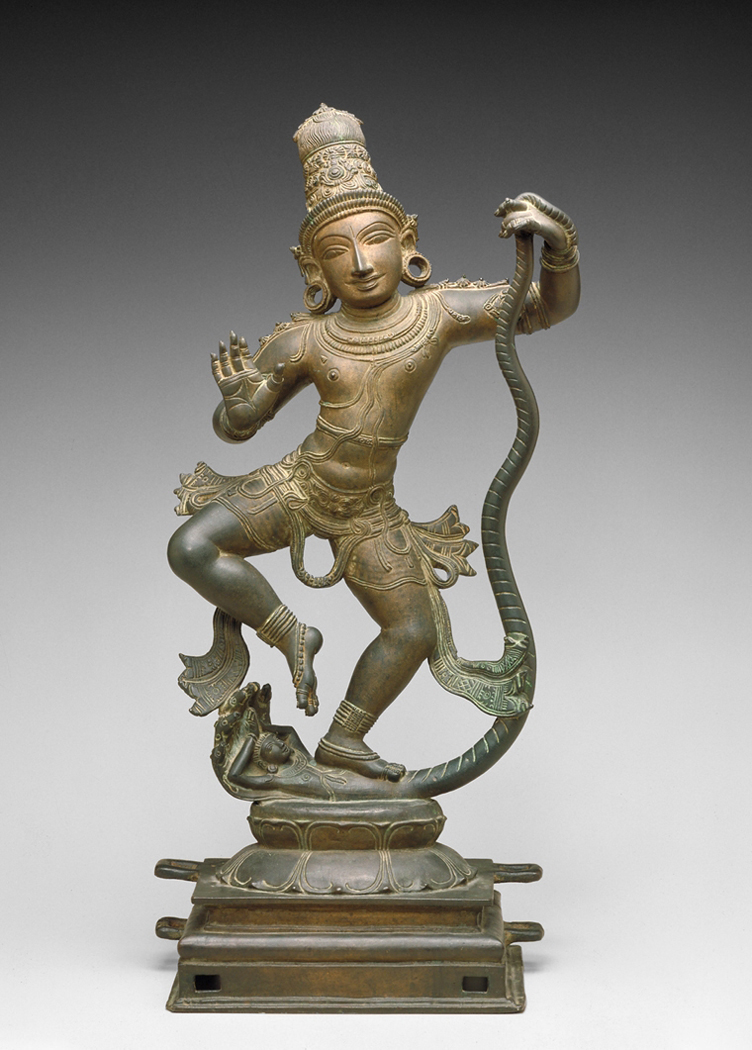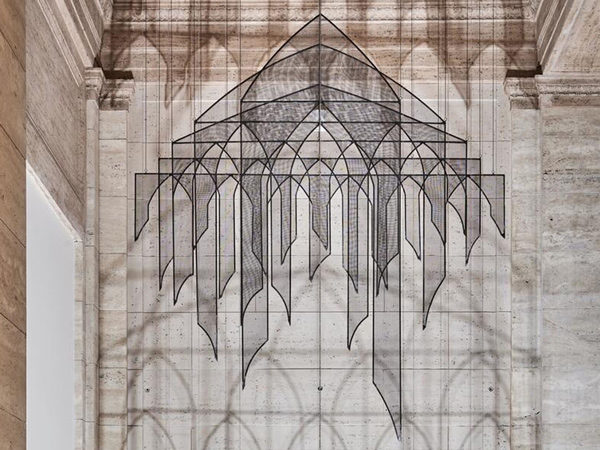Activity
Krishna overcoming the serpent Kaliya, 1400–1500

Krishna overcoming the serpent Kaliya, 1400–1500
Who is depicted here?
This is a bronze statue of the god Krishna dancing on the body of the serpent Kaliya. Krishna is the eighth descent (avatara) of the god Vishnu, fulfilling Vishnu’s ongoing role as maintainer of the universe. Krishna is very popular in India, and is often seen as a youthful cowherd figure playing a flute, as a child stealing butter, as a lover of Radha, or as the guide and mentor of the warrior Arjuna before the great battle in the epic poem, the Mahabharata.
Scenes of Krishna’s life and deeds are drawn from many epic, Sanskrit, and vernacular texts. In this episode, Krishna is still a young village cow herd, and has been called upon by the villagers to subdue the serpent king Kaliya, whose family is polluting the Yamuna River. We know Kaliya is a king because of the seven hoods surrounding his head. Krishna plunges into the river, and with his superhuman powers, subdues the serpent. Here he is seen dancing on the body of the serpent, who shows respect for Krishna by raising his hands in a gesture of submission and adoration.
How do we recognize Krishna?
Krishna is shown here as a vigorous youth in a scene which would be immediately recognizable as one of the classic episodes from his life. Krishna always has a handsome, pleasing demeanor, as befits a beloved god. His ability to contain evil, and his delight in sustaining the cosmos, is shown in the effortless manner in which he dances on the body of the serpent. His right hand gesture offers reassurance to worshipers. The Southern Indian artisans who produced this statue enhanced the god’s appeal with a profusion of jewelry, fluttering garments, and flowers on his shoulder. In addition, Krishna wears a tall crown, much like Vishnu.
How was this sculpture made?
This sculpture, along with other bronzes in the India gallery, was made using the lost-wax technique. A wax model of the statue was covered by a clay mold and then heated. The wax melted, leaving an empty core that was filled with liquid bronze. The clay mold was then broken, leaving a bronze sculpture. Devotional sculptures, both for temple and private use, are still fashioned in southern India today, using this method.
How was this sculpture used?
This bronze was cast during the Vijayanagar period, around the 1400s in Southern India. The Vijayanagar period was the last great Hindu kingdom of South India. Continuing in the path of their Chola predecessors, the Vijayanagar rulers were vigorous patrons of the arts. At this time, the image of Kaliya Krishna became popular. Lugs, or handles on the base of the bronze , indicate that it was made to be carried in processions.







